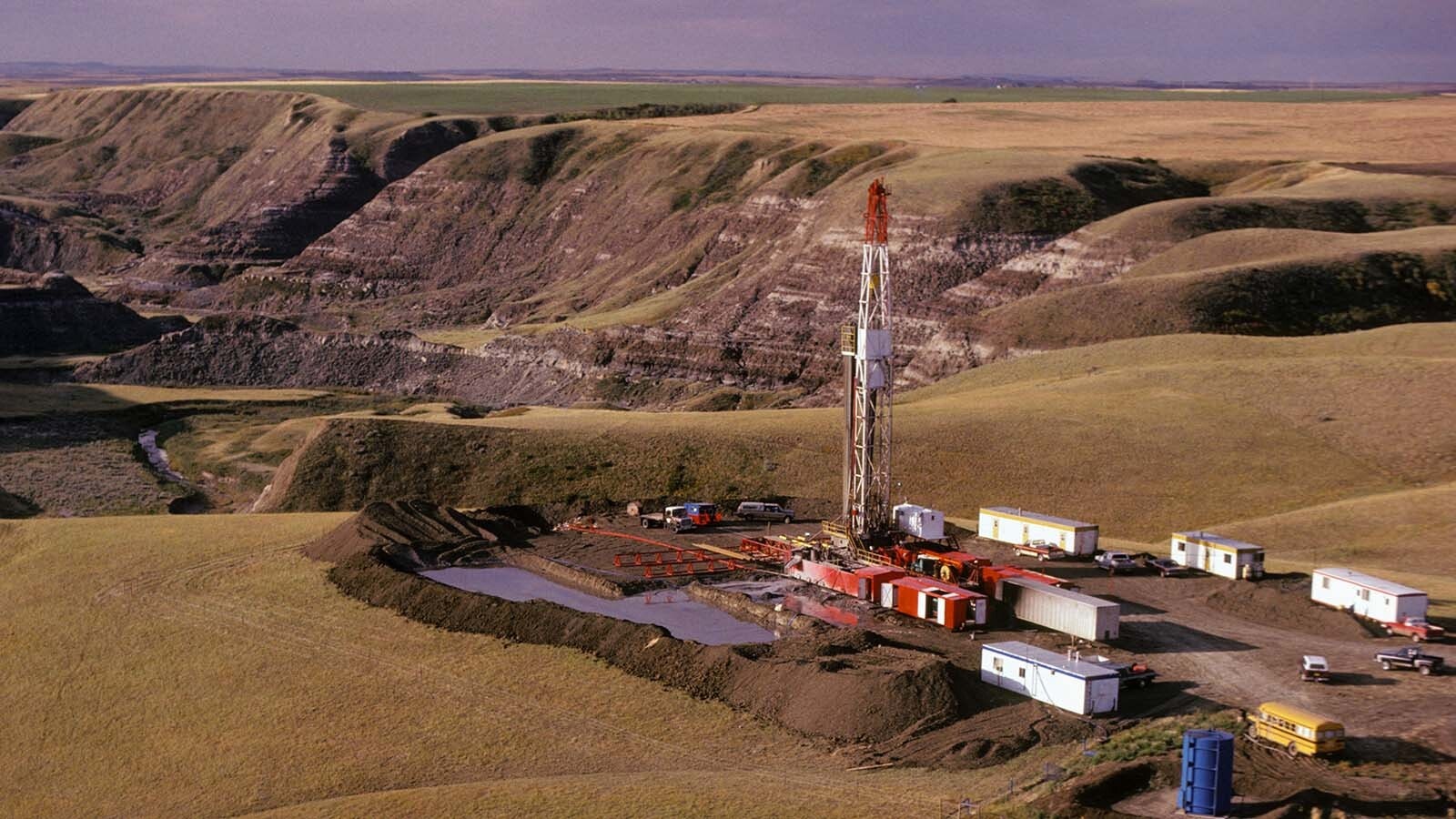The Cowboy State’s oil and gas industry is bracing for life support should a newly released Biden administration rule on drilling on federal public lands stick, according to the Petroleum Association of Wyoming, which is considering litigation to halt the policy from going into effect.
At the crux of the dispute with the U.S. Bureau of Land Management is a new rule issued April 11 that could make it difficult for some oil and gas companies to bid on energy leases on public lands.
“We are reviewing the final rule from the BLM and considering all options, including litigation, to look out for the people of Wyoming and protect Wyoming businesses that develop our natural resources,” said Ryan McConnaughey, vice president and director of communications with the Petroleum Association of Wyoming.
“We have not made a determination on what it (the litigation) looks like because we are trying to understand fully its implications,” McConnaughey said.
He couldn’t say whether the Wyoming group might join with others in litigation, such as the Western Energy Alliance, a Denver-based trade group that represents small energy developers and has already announced plans to file a lawsuit to derail the rule.
Would Be Devastating
The economic effects of the rule could spell trouble ahead for Wyoming.
The Petroleum Association of Wyoming’s members range from 26 of the state’s top 30 producers to small mom-and-pop operators, accounting for more than 90% of Wyoming’s oil and natural gas production. Collectively, the group’s members generate more than $5 billion in economic activity and employ 19,000 workers.
“It’ll push development to other countries,” McConnaughey said. “This would have a huge impact in Wyoming ranging from K-12 education to running the state and infrastructure. These resources keep cities, towns and the state afloat.”
The BLM said that its rules were designed to strengthen accountability for oil and gas operations on public lands. The rule is the agency’s first update to the federal onshore oil and gas leasing program since 1988, and the first update to minimum bonding levels since 1960.
Generally, the rules impose higher fees and increases royalty rates for the first time in more than a century.
Wyoming’s oil and gas industry says that the rule dramatically raises bonding requirements and severely limits the number of parcels offered at lease sales.
The industry also says that the BLM rules effectively make the process for bidding on leases more expensive due to the government’s misunderstanding of orphan wells and how many exist on public lands.
Orphaned wells are abandoned wells for which no owner can be determined. That number is fractional on public lands. It’s a different story on private lands, where there are substantially more.
Few Orphans
“We don’t have a lot in Wyoming,” said McConnaughey of orphan wells here.
Of about 94,000 oil and gas wells on federally managed lands, the BLM mitigates 20 wells that become orphans annually, which is 0.00021% of the total number.
Roughly 29%, or 27,000, of the 94,000 total wells nationwide are in Wyoming, making it the No. 2 producer of oil and gas on public lands in the country. New Mexico, which straddles the energy-rich Permian Basin in west Texas and New Mexico, tops the list.
“One of the big things here is the bonding issue. BLM is asking companies in Wyoming to shell out $1.9 billion in bonding coverage when nationwide the BLM cost averages between $1.1 million and $1.7 million a year in cleanup costs.” McConnaughey said. “That’s a magnitude higher than the costs nationwide.”
The disparity is hurting Wyoming, he said.
“I think the fact that the data is egregiously so high is another attempt by the BLM to get oil and gas development off federal land,” McConnaughey said. There is no other reasonable explanation for a cost that is this significant.”
1,400% Increase
Gov. Mark Gordon said the oil and gas rule gives him heartburn.
Gordon took a swipe at BLM’s parent agency, the Interior Department, for its misguided pursuit not only on oil and gas leasing, but also last week’s renewable energy rule that gives a jolt of economic benefits to developers of wind and solar projects on public lands at the expense of mining, oil and gas interests.
“If there was any doubt, it could not be more clear now that the Department of Interior has lost its way,” said Gordon in a statement.
Within a day of announcing its renewable energy rule designed to “promote the equivalent of a modern-day gold rush” of development for renewables by reducing fees and rents on federal lands by 80%,” Interior issued an oil and gas rule increasing costs to Wyoming’s industry by 1,400%, Gordon said.
“America surely needs more energy, including from renewable sources,” Gordon said. “What our country does not need are policies that greatly reduce the return to our nation’s taxpayers while simultaneously increasing the impacts and burdens on states and communities.”
Gordon said that he wants a balanced energy portfolio.
“We don’t need policies that increase the costs to consumers while also reducing reliability, or rules that sharpen the threat of industrializing our open spaces and crucial wildlife habitat without recognizing the importance of balance in our energy portfolio,” he said. “I will continue to fight against federal policies that are short-sighted and antagonistic to Wyoming’s industries, our workers and our way of life.”
Pat Maio can be reached at pat@cowboystatedaily.com.





